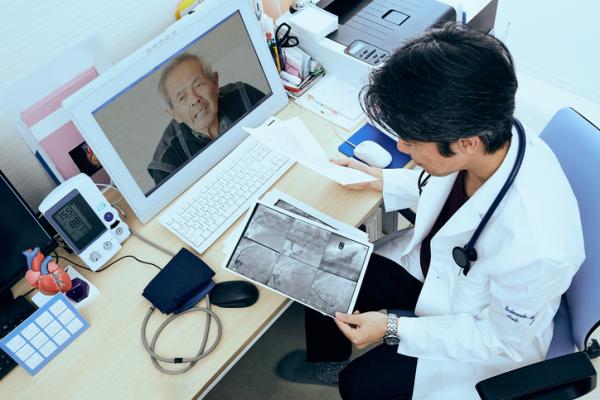
Getty Images
January 6, 2022 — Staffordshire University health experts claim there is an urgent need for global telehealth guidelines to improve remote patient care.
The COVID-19 pandemic saw an unprecedented expansion of telehealth with a shift to remote patient consultations across the allied health professions which includes prosthetics and orthotists, physiotherapy, podiatry, orthoptists, occupational therapists, dieticians and osteopathy.
However a new study published in BMJ Open which examines current guidelines for the 14 Allied Health Professionals (AHPs) in the UK reveals a clear need to solve the disparities in the level of guidance for remote consultations between professions.
Professor Nachi Chockalingam, Director of the Centre for Biomechanics and Rehabilitation Technologies (CBRT) at Staffordshire University, explained: “Good patient satisfaction, greater accessibility, convenience, and reduced travel and wait times are some of the factors that have led to increased telehealth usage and acceptability.
“Although the pandemic has accelerated the transition to technology-mediated care, concerns and limitations related to remote consultations and the unintended risks, errors and harm that can occur to patients during and/or as a result of remote consultations are still present.”
While telehealth can be considered an efficient and safe way to deliver consultations, in practice there are barriers which can lead to unintended consequences; these include technological constraints such as inadequate internet bandwidth, lack of skills among users, patient confidentiality, privacy as well as data security issues.
Additionally, concerns have been raised about the risk of patient harm resulting from the lack of diagnostic and therapeutic quality of services delivered through telehealth, as this can lead to highly infectious and life-threatening conditions being missed.
The study revealed that most telehealth guidelines were designed to quickly respond to the need for remote patient consultations during the Covid-19 pandemic and recommends that available guidelines should be reviewed to ensure they meet the long-term needs of patient consultations.
Very few guidelines were specifically designed for certain clinical populations, which acknowledged that telehealth consultations need to be adapted to meet individual needs. It was also found that most guidelines were specifically designed for occupational therapists, physiotherapists and speech and language therapists, leaving the other AHP groups with very few or inadequate guidelines.
Associate Professors Dr Aoife Healy and Dr Nicola Eddison of CBRT added: “Robust guidance should be available to assist clinicians by offering clear instructions on how to provide remote consultations, which would also help them limit inappropriate and ineffective interventions, and most importantly, harm to patients.
“Our work highlights that future research and collaborative work across AHP groups and the world’s leading health institutions are required to establish common guidelines which will improve AHP telehealth services. This will be a first step to establish global telehealth guidelines that can be adapted to local contexts with a view to improve quality of AHP service provision across the world.”
Staffordshire University researchers are also collaborating with international NGOs on the development of telehealth options for the provision of assistive technology.
For more information: www.staffs.ac.uk/
Related Telemedicine Coverage:
VIDEO: The New Normal of Home Workstations, Teleradiology and Remote Reading
Telemedicine During COVID-19: Video vs. Phone Visits and the Digital Divide
California Physicians Weigh In On Telemedicine
Just Consider the Possibilities


 May 17, 2024
May 17, 2024 








